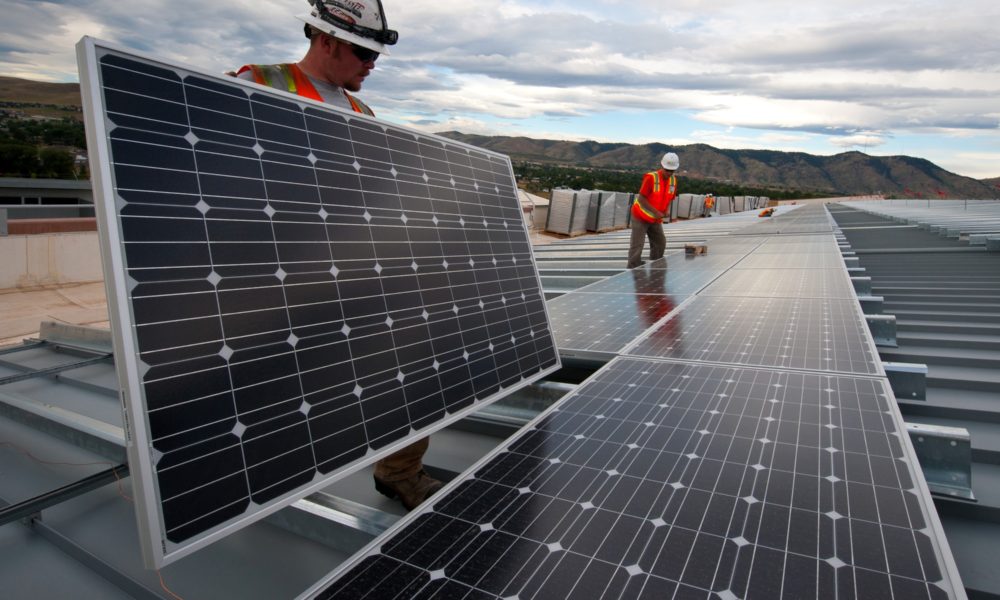As Zero Energy buildings continue to advance into the mainstream of the built environment, supported by high performance building and energy codes, city and state energy policies, utility incentive programs, and various greenhouse gas reduction targets, ILFI has launched a new pathway for certification using offsite renewables. The Offsite Renewables Exception, or alternative compliance pathway for projects seeking certification with ILFI using a renewable energy procurement strategy, was designed to address scenarios where certain building types are constrained from achieving Zero Energy performance using onsite generation. The following project types are eligible to pursue Zero Energy certification and Living Building Challenge certification using offsite renewable energy:
- Tenant improvement projects where there is no ownership interest by the project owner or developer in the core building HVAC systems, and/or the building envelope or grounds;
- Projects which even after the highest level of efficiency is attained are unable to offset their energy use onsite due to project density/height or inherently very high baseline EUI’s (such as a hospital or data center); or
- Projects that are not able to provide onsite renewables due to substantial limitations of the local grid to absorb the generated energy, or jurisdiction-related limitations (such as military restrictions on wind turbine placement).
For eligible projects pursuing certification using this exception, ILFI has worked with partner organizations and industry leaders to include the following requirements, which are designed to mirror the performance criteria of projects achieving Zero Energy from onsite renewables:
- The offsite renewables must be located in the same regional grid as the project. For projects in the US, offsite renewables located within the same NERC Interconnection regions as the project location are accepted.
- Sensitive siting criteria consistent with ILFI’s Limits to Growth imperative is required for the offsite renewable energy generation facilities.
- Legal assignment is required for ownership of the offsite renewables’ energy output using a standard agreement such as a Power Purchase Agreement (PPA), with a minimum required term length of 15 years. Tenant Improvement projects may align the PPA term length with the length of their building lease.
In addition to these requirements, ILFI’s energy program staff will review an energy model from the project team to determine eligibility and help target the highest level of energy efficiency. Projects using the Offsite Renewables Exception must also directly meter and monitor the energy production from the offsite system, provide an energy dashboard at the project site, and create a strategy to reinforce the targeted level of energy efficiency. New construction projects and existing buildings also have a minimum onsite renewable energy requirement, which is stated as follows:
- Minimum onsite renewable energy requirement:
-
- For existing buildings: Projects must perform a Solar Site Assessment of the existing roof from a qualified contractor. For those portions of the roof which have a total solar resource fraction (TSRF) of 75% and greater, projects must install a minimum 75% of the maximum solar capacity (based on DC—nameplate), based on standard industry practice for PV installation and maintenance accessibility.
- For new construction: Projects must be designed and include solar photovoltaics on a minimum of 75% of the total roof area, using standard industry practice for PV installation and maintenance accessibility within that 75%. Systems shall be designed to provide a minimum TSRF of 75% and greater.
This exciting new pathway for certification with ILFI has numerous inroads through the roll-out of innovative shared and community solar programs, 100% Renewable Commitment campaigns, and other legislative initiatives such as renewable portfolio standard targets for utilities’ fuel mix. Offsite renewables energy systems often provide cost savings through economies of scale, with project developers and municipal and utility programs exploring equitable ways to share the benefits of clean energy. Utility-scale solar PV projects, for example, have seen the largest growth when compared to all other sectors of the booming US solar energy market:

Solar Energy Industries Association (SEIA), 2017 – https://www.seia.org/solar-industry-data
Projects and partner organizations interested in pursuing certification using offsite renewables are encouraged to contact ILFI’s energy team to discuss eligibility and best practices for achieving certification with the new pathway: ZE.Support@living-future.org



